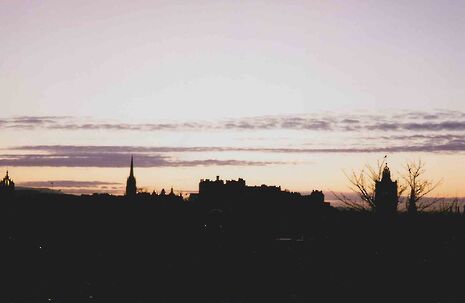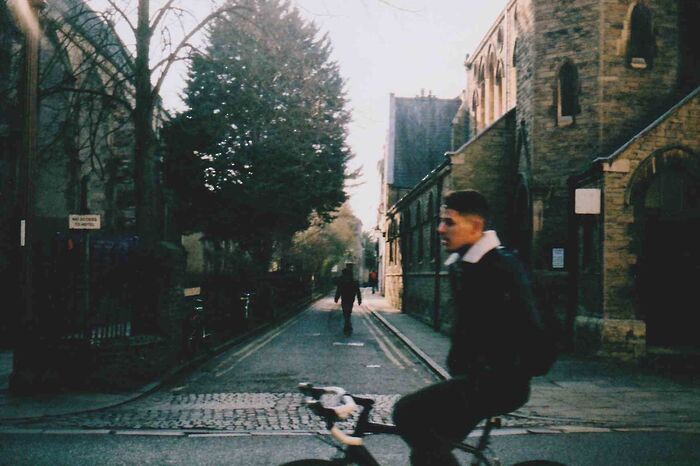Walking through autumn twilight
The days may be getting shorter, but take advantage of the brilliant twilight the season offers

Time is now creeping towards December, towards the beginning of a new decade – I have seen too many tweets asking me what I have done since the millennium, reminding me of my inadequacies and my particular skill of fitting a whole digestive in my mouth – and night is falling faster. I am enjoying the melting of day and night, soft blues and darkness and the quietness that settles. And, because my brain has determined that because I went for walks between the hours of four pm and five pm in Easter term, it also thinks that I should continue to do so now: now, however, this time is twilight, this means that I become rapidly engulfed by the lack of light.
Yet walking this late still makes sense, because I am at my most lethargic in the late afternoon, more likely to languish on my bed like the love-longing Troilus instead of reading about him. I spend my mornings stewing in the library or (occasionally) a lecture theatre, and it is only when I notice the way in which the darkness seeps in that I realise that I need to stop breathing in book dust.
So I go out, notice things, and although I used to be terrified of the dark, one of the best places to go out is at dusk itself. It’s not dark enough to warrant second-guessing every move, but it is dark enough for a sense of quietness to settle and mist to rise. Autumn is still very much in the air, but her colours are muted and they are mauve-tinted, spectral, gauzy and hazy like a Turner-esque wet dream.
“It’s easier to see the softness of the city and even if for half an hour there is calm”
On my last cusp-of-darkness walk, it was indeed twilight (although I’m not sure how enthusiastic I would be if Robert Pattinson came creeping out of the undergrowth). I don’t tend to stray too far out of the city when it’s dark (I have spent too many hours watching Midsomer Murders), but when I did, I saw my first kingfisher as an electric flash against the muddying night. He was tree-perched at the side of the Cam for an indeterminate amount of time (whilst I stood and gawped), before fleeting away along the river. I could well have missed him in the glossy colours of daytime autumn; too many reds, yellows, blues, and I look at everything and nothing. My attention span is not the best, and I get caught up in my retriever-like enthusiasm for autumn. (Give me the swishy leaves on Sidgwick Avenue! Hot chocolate! Entering the library when it is light and only emerging again in the dark!) But in the semi-darkness, when you have to strain to see anything of interest, I need to calm the enthusiasm, because at dusk birds still move quickly and quietly, even if I don’t. There is a satisfaction in matching the quietness, in quelling thoughts and allowing the twilit greyness to hang lightly.
Admittedly, I never linger. I’ve never been keen on the dark; I read too many folk tales and combined with an overactive imagination and a desire to stay safe and not risk falling face-first, I stick to the city when the dark is too overwhelming. Walking in the city is far less interesting – the only animal I’ve seen is ‘Bin Squirrel’, who I saw scrambling out of a bin with a whole croissant in his mouth and with whom I share a great affinity – but there is still the moon and stars and the coldness that sweeps in. It is the sense of peace (if temporary) that almost-night brings, the strange feeling of being on the liminal boundary of day and night.
My favourite collection of short stories is in fact called Light and Twilight, by Edward Thomas, where he subtly and tenderly addresses the line between – and significance of – beginnings and endings. In one story, he writes about ‘the grey ribs of a delicate sunset’ – it is this soft delicacy to which twilight belongs. As it drops a veil over the harshness of artificial lights and concrete, it’s easier to see the softness of the city and, even if for only half an hour, there is calm. And there’s not a vampire in sight.
 News / SU reluctantly registers controversial women’s soc18 December 2025
News / SU reluctantly registers controversial women’s soc18 December 2025 News / CUP announces funding scheme for under-represented academics19 December 2025
News / CUP announces funding scheme for under-represented academics19 December 2025 Features / Should I stay or should I go? Cambridge students and alumni reflect on how their memories stay with them15 December 2025
Features / Should I stay or should I go? Cambridge students and alumni reflect on how their memories stay with them15 December 2025 Fashion / The art of the formal outfit 18 December 2025
Fashion / The art of the formal outfit 18 December 2025 Lifestyle / Summer lovin’ had me so… lonely?18 December 2025
Lifestyle / Summer lovin’ had me so… lonely?18 December 2025









